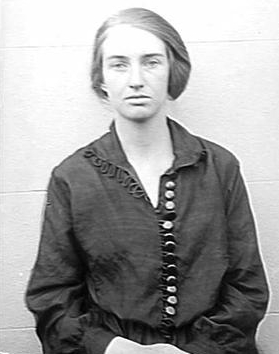Ellison Harvie facts for kids
Quick facts for kids
Ellison Harvie
|
|
|---|---|
 |
|
| Born | 18 May 1902 Prahran, Victoria, Australia
|
| Died | 27 September 1984 (aged 82) East Melbourne, Victoria, Australia
|
| Nationality | Australian |
| Alma mater | University of Melbourne |
| Occupation | Architect |
| Parent(s) | Alice Edington Harvie, née Marshall Robert William Harvie |
Ellison Harvie (born May 18, 1902 – died September 27, 1984) was a very important Australian architect. She was a strong supporter of women growing in their careers.
In 1938, she became the first Australian woman to earn a special degree in architectural design. Just four years later, in 1942, she was the first woman chosen to be on an Australian Architectural Institute council. She also became the first female Fellow of the Royal Victorian Institute of Architects in 1946. In the same year, she made history again by becoming the first Australian woman to be a partner in a large architecture firm.
Ellison Harvie was known as an expert in planning and managing hospitals. She worked on many projects across Australia. These included the Mercy Hospital in East Melbourne (1934–36) and the first four tall buildings of the Royal Melbourne Hospital (1936–41).
Early Life and Education
Ellison Harvie was born on May 18, 1902, in Prahran, a suburb of Melbourne. Her father, Robert William Harvie, was a photographer. Her mother was Alice Edington Harvie.
Her father was famous for filming the Caulfield Cup and Melbourne Cup horse races in 1897. He would develop the film and show it the same evening at the Melbourne Opera House.
As a child, Ellison loved architecture. Her father encouraged her interest. After attending Warwick, a girls' school, she tried to find a job as an assistant at an architecture office in Melbourne. When she couldn't find one, she decided to study architecture at Swinburne Technical College in 1920. She studied there for three years.
In 1921, one of her teachers, Arthur Stephenson, invited her to join his new architecture firm. The firm, Stephenson & Meldrum, designed hospitals, public housing, and commercial buildings. After finishing at Swinburne, Ellison traveled to Europe. She wanted to learn about the newest ideas and methods in architecture.
She returned to Melbourne in 1925 and finished her training at Stephenson & Meldrum. At the same time, she also studied at the University of Melbourne's Architectural Atelier until 1928. This course helped students prepare for important exams. In 1927, Ellison won two awards: the University of Melbourne's Atelier award and the President's Prize for best student work. In 1938, she became the first Australian woman to receive a Diploma of Architectural Design.
A Pioneering Career
Ellison Harvie officially joined the Royal Victorian Institute of Architects in 1926. She became an associate member in 1928. In the same year she registered, Stephenson & Meldrum made her the lead architect for the Jessie MacPherson Wing of the Queen Victoria Hospital in Melbourne.
Throughout the 1930s, she worked on every hospital project her firm handled in Melbourne and Sydney. She led the work on St Vincent's Hospital (1933), Mercy Hospital (1934–36), and Freemasons Hospital (1935).
As Stephenson & Meldrum became more famous around the world, the firm changed its name to Stephenson & Turner in 1937. Ellison Harvie became an associate of the firm. In this new role, she was in charge of the Melbourne office while a new office was being set up in Sydney.
When World War II started in 1945, Ellison Harvie managed both offices. She was then made a partner in the firm. This made her the first Australian woman to become a partner in a large architecture company. She also qualified as an accountant and created a new type of building contract. This contract could change to deal with the uncertain economy at the time.
For the rest of her career, Ellison Harvie was a well-known female architect. She mostly worked on large commercial and public buildings, not on homes. This was different from most women architects at the time. She strongly believed in helping women grow in their professions and take part in public life.
Two of her few private projects were the Melbourne's Lyceum Clubrooms (1959) and St Hilda's College (1963) at Melbourne University. These buildings were made specifically for women. They clearly show her modern architectural style.
Ellison Harvie was part of many important committees. She served on committees for the Royal Victorian Institute of Architects starting in 1929. She was also a member of the Royal Institute of British Architects. She felt that architecture was not appreciated enough in Australia. Because of this, she served on the Royal Victorian Institute of Architects Board of Architectural Education from 1946 to 1956. She also served on the board of the University of Melbourne's Faculty of Architecture from 1945 to 1973.
In 1942, she became the first woman elected to an Australian Architectural Institute council. Later, she became a life fellow of the Royal Australian Institute of Architects. She continued to work on hospital projects until she retired from full-time work in 1968.
Ellison Harvie passed away in East Melbourne on September 27, 1984. She was buried in Boroondara cemetery in Kew.
Images for kids


